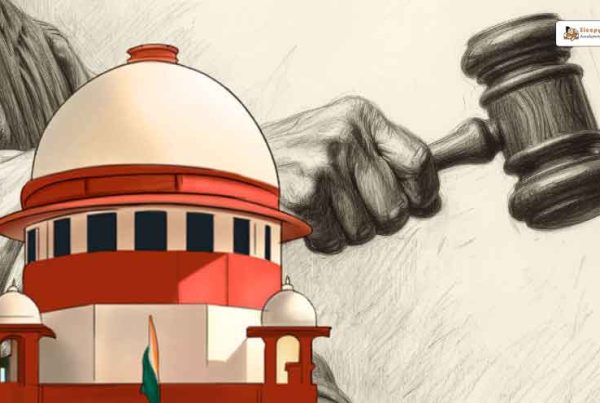The Indra Sawhney vs Union of India case, also known as the Mandal Commission case, is a landmark judgment in the history of India. Decided in 1992 by the Supreme Court, it addressed the complex issue of reservations in government jobs and education for Other Backward Classes (OBCs). This case has had a lasting impact on India’s reservation policies and has sparked numerous debates and further legal challenges.
Key Takeaways
- The case upheld the use of caste as a measure of social and educational backwardness.
- It introduced the concept of the ‘creamy layer,’ which excludes the wealthier members of OBCs from reservation benefits.
- The Supreme Court set a 50% limit on the total reservations in government jobs and educational institutions.
- Reservations in promotions were deemed unconstitutional, ensuring that reservations apply only at the initial stage of employment.
- The judgment has influenced many subsequent legal decisions and has shaped the discourse around affirmative action in India.
Historical Background Leading to Indra Sawhney vs Union of India
Formation of the Mandal Commission
The Mandal Commission was set up in 1979 by the Indian government to identify the socially or educationally backward classes. The commission, led by B.P. Mandal, aimed to address the inequalities faced by these groups. Its formation marked a significant step towards social justice in India.
Initial Recommendations and Political Reactions
In 1980, the Mandal Commission submitted its report, recommending a 27% reservation for Other Backward Classes (OBCs) in government jobs and educational institutions. This proposal sparked intense political debates and public reactions. Some supported the move as a way to uplift marginalized communities, while others opposed it, fearing it would lead to reverse discrimination.
Events Leading to the Supreme Court Case
The implementation of the Mandal Commission’s recommendations in 1990 by Prime Minister V.P. Singh’s government led to widespread protests and unrest. The decision was challenged in the Supreme Court, resulting in the landmark case of Indra Sawhney vs Union of India. The case questioned the constitutionality of the reservation policy and sought to address the balance between social justice and meritocracy.
Key Judgments and Principles Established in Indra Sawhney vs Union of India
Supreme Court’s Ruling on Caste and Backwardness
The Supreme Court, in its verdict on November 16, 1992, upheld the government’s order, stating that caste is an acceptable indicator of backwardness. This decision validated the recommendation for reservations for Other Backward Classes (OBCs) in central government services. The court’s ruling emphasized the importance of social backwardness as a criterion for reservations.
Introduction of the Creamy Layer Concept
One of the significant principles established by the court was the introduction of the creamy layer concept. This concept aimed to exclude the more affluent members of the OBCs from availing the benefits of reservation. Initially set at an income limit of Rs 100,000 in 1993, it has been revised multiple times, reflecting changes in economic conditions.
50% Cap on Reservations
The court also set a crucial limit on the extent of reservations. It ruled that reservations should not exceed 50% of the available seats. This cap was intended to balance the need for affirmative action with the principle of equality, ensuring that the reservation system does not undermine meritocracy.
The Indra Sawhney judgment laid down the limits of the state’s powers, emphasizing the need for a balanced approach to reservations. This landmark decision continues to influence India’s reservation policies and social equity measures.
Impact of Indra Sawhney vs Union of India on Reservation Policies
The Indra Sawhney judgment had a profound impact on India’s reservation policies. One of the most significant changes was the introduction of the creamy layer concept, which aimed to exclude the more affluent members of the Other Backward Classes (OBCs) from availing reservations. This was done to ensure that the benefits of affirmative action reached the truly needy sections of society.
Changes in Reservation Policies Post-Judgment
The judgment led to the implementation of a 50% cap on reservations, which means that no more than half of the seats in government jobs and educational institutions can be reserved for various categories. This cap was introduced to maintain a balance between affirmative action and meritocracy. Additionally, the concept of the creamy layer was introduced, which excluded the wealthier and more advanced members of the OBCs from reservation benefits.
State-Level Responses and Variations
Different states in India responded to the Indra Sawhney judgment in varied ways. Some states, like Tamil Nadu, sought to exceed the 50% cap by citing exceptional circumstances. Others, like Bihar, had their attempts to implement higher quotas struck down by the high court. These variations highlight the diverse socio-political landscapes across the country and the challenges in uniformly applying the judgment.
Long-Term Effects on Social Equity
The long-term effects of the Indra Sawhney judgment on social equity are still being debated. While the judgment aimed to create a more equitable society by ensuring that only the truly needy benefited from reservations, it also sparked debates on the effectiveness of the creamy layer concept and the 50% cap. Some argue that these measures have helped in creating a more balanced approach to affirmative action, while others believe that they have not gone far enough in addressing historical injustices.
The Indra Sawhney judgment remains a cornerstone in the ongoing discourse on reservation policies in India. Its principles continue to influence contemporary legal thought and policy-making, ensuring that the debate on social equity and affirmative action remains dynamic and evolving.
Subsequent Legal Developments Influenced by Indra Sawhney vs Union of India
The landmark judgment in Indra Sawhney vs Union of India has significantly shaped India’s legal landscape, especially concerning reservation policies. This case has led to several important legal developments over the years.
Notable Cases Following the Judgment
After the 1992 verdict, many cases have referenced Indra Sawhney to address issues related to reservations. For instance, the Supreme Court reaffirmed the exclusion of the creamy layer in 2006, extending it to Scheduled Castes (SCs) and Scheduled Tribes (STs). This decision was crucial in maintaining the balance between affirmative action and meritocracy.
Constitutional Amendments and Legislative Changes
The judgment also prompted several constitutional amendments. One notable change was the 77th Amendment Act of 1995, which allowed reservations in promotions for SCs and STs. This amendment was a direct response to the limitations set by the Indra Sawhney case, showcasing the dynamic nature of India’s legal system.
Judicial Interpretations and Clarifications
Over the years, the judiciary has provided various interpretations and clarifications on the principles established in Indra Sawhney. These interpretations have helped in refining the application of reservation policies, ensuring they remain relevant and effective in addressing social inequities.
The Indra Sawhney judgment continues to be a cornerstone in the discourse on reservation policies in India. Its influence is evident in subsequent legal developments and ongoing debates about social justice and equality.
Controversies and Criticisms Surrounding Indra Sawhney vs Union of India
The landmark judgment in the Indra Sawhney vs Union of India case has not been without its share of controversies and criticisms. The decision to implement a 27% reservation for Other Backward Classes (OBCs) in central government jobs sparked significant debate and dissent across various sections of society.
Political and Social Backlash
The ruling led to widespread political and social backlash. Many political parties and social groups argued that the judgment would lead to further division in society based on caste lines. Protests and demonstrations erupted in several parts of the country, reflecting the deep-seated tensions surrounding the issue of reservations.
Debates on Meritocracy vs Affirmative Action
One of the most heated debates following the judgment was the conflict between meritocracy and affirmative action. Critics argued that reservations compromised the principle of meritocracy, potentially lowering the standards in public services and educational institutions. On the other hand, supporters believed that affirmative action was essential to address historical injustices and provide equal opportunities to marginalized communities.
Ongoing Legal and Social Challenges
The judgment also faced ongoing legal and social challenges. Various petitions were filed seeking a review or reconsideration of the decision, arguing that the implementation of the creamy layer concept was not sufficient to ensure true social justice. The Supreme Court had to address these challenges, leading to further legal scrutiny and interpretations of the original ruling.
The Indra Sawhney judgment remains a pivotal moment in India’s legal and social history, highlighting the complexities and challenges of implementing reservation policies in a diverse society.
The Role of Indra Sawhney vs Union of India in Modern Indian Jurisprudence
Influence on Contemporary Legal Thought
The landmark case of Indra Sawhney vs Union of India has significantly shaped modern Indian jurisprudence. It established that caste can be a valid indicator of social and educational backwardness. This ruling has influenced numerous subsequent judgments and legal interpretations, reinforcing the importance of affirmative action in addressing historical injustices.
Comparisons with Other Landmark Judgments
Indra Sawhney vs Union of India is often compared to other major cases like Brown vs Board of Education in the United States. Both cases addressed systemic inequalities and set precedents for future legal decisions. While Brown focused on racial segregation in schools, Indra Sawhney dealt with caste-based reservations, highlighting the global struggle for social justice.
Future Implications for Reservation Policies
The principles established in Indra Sawhney vs Union of India continue to guide reservation policies in India. The introduction of the creamy layer concept and the 50% cap on reservations are key elements that ensure a balanced approach to affirmative action. These guidelines help maintain social equity while preventing the misuse of reservation benefits.
The Indra Sawhney judgment remains a cornerstone in the Indian legal system, ensuring that merit triumphs over tenure and that affirmative action policies are implemented fairly and justly.
The Indra Sawhney vs Union of India case is a landmark judgment in Indian law. It shaped the way reservations are handled in the country. This case is crucial for understanding modern Indian jurisprudence. Want to dive deeper into this topic? Visit our website for more detailed articles and resources.
Conclusion
The Indra Sawhney vs Union of India judgment is a cornerstone in the history of India’s reservation policies. It set important limits and guidelines that continue to shape affirmative action in the country. By capping reservations at 50% and introducing the concept of the creamy layer, the ruling aimed to balance social justice with meritocracy. While the decision has faced both support and criticism, its impact on the socio-political landscape is undeniable. As India continues to evolve, the principles laid down in this landmark case will likely remain a reference point for future debates and policies on reservation.
Frequently Asked Questions
What is the Indra Sawhney vs Union of India case about?
The Indra Sawhney vs Union of India case, also known as the Mandal Commission case, is a landmark Supreme Court judgment from 1992. It focused on the reservation policies in India, especially the implementation of quotas for Other Backward Classes (OBCs) in public jobs and education.
What was the Mandal Commission?
The Mandal Commission, established in 1979 by Prime Minister Morarji Desai, was tasked with identifying socially or educationally backward classes in India. The Commission recommended a 27% reservation for OBCs in government jobs and educational institutions.
What did the Supreme Court decide in the Indra Sawhney case?
The Supreme Court upheld the 27% reservation for OBCs but introduced the concept of the “creamy layer” to exclude the more affluent members of these communities. It also set a 50% cap on the total reservations and ruled that reservations could not be applied in promotions.
What is the “creamy layer” concept?
The “creamy layer” concept refers to the more affluent and better-educated members of the OBCs who are excluded from reservation benefits. This is to ensure that the benefits reach the truly disadvantaged members of these communities.
How did the Indra Sawhney judgment impact reservation policies?
The judgment led to significant changes in reservation policies. It enforced the 50% cap on reservations, introduced the creamy layer exclusion, and restricted reservations in promotions. These changes aimed to balance affirmative action with meritocracy.
Are there any controversies related to the Indra Sawhney case?
Yes, the judgment has faced both support and criticism. Some argue it helps promote social equity, while others believe it undermines meritocracy. The introduction of the creamy layer concept and the 50% cap on reservations have been particularly contentious.







